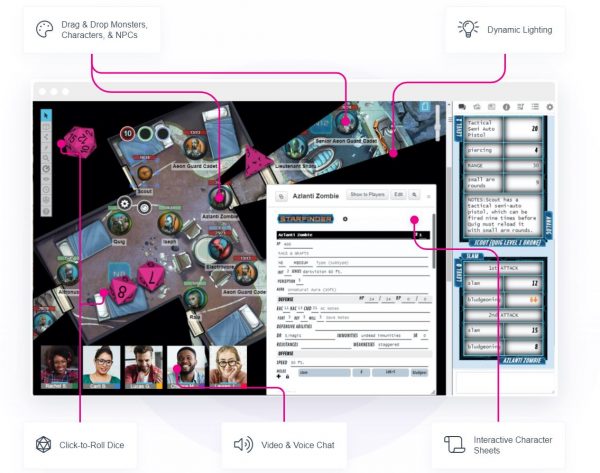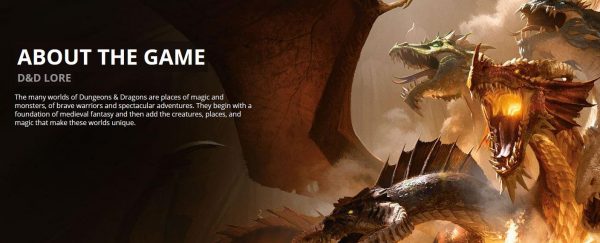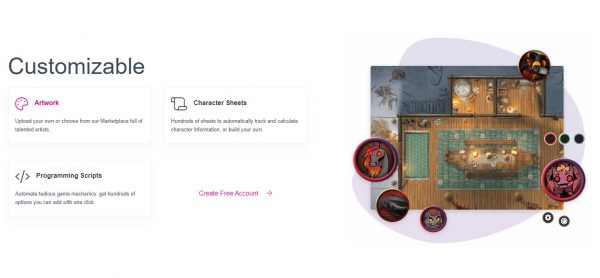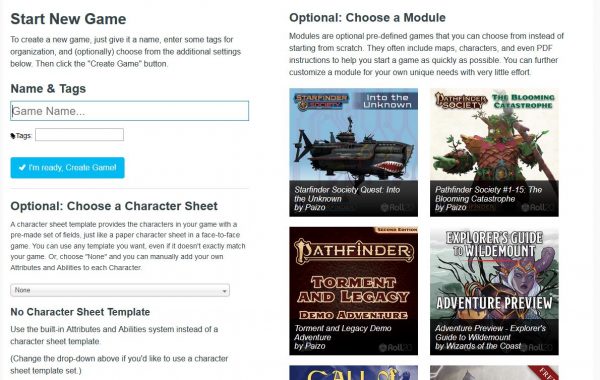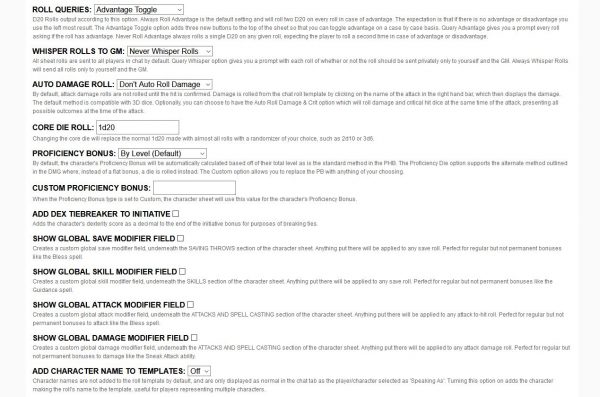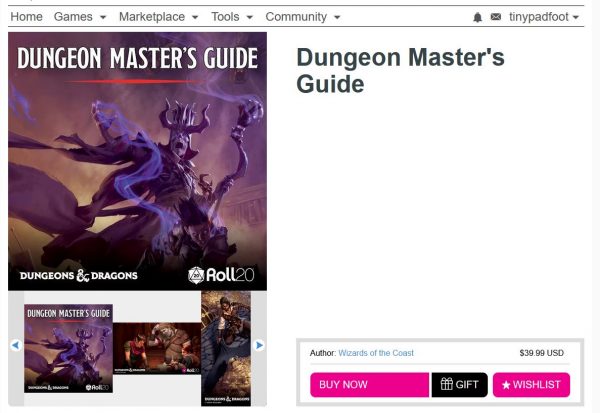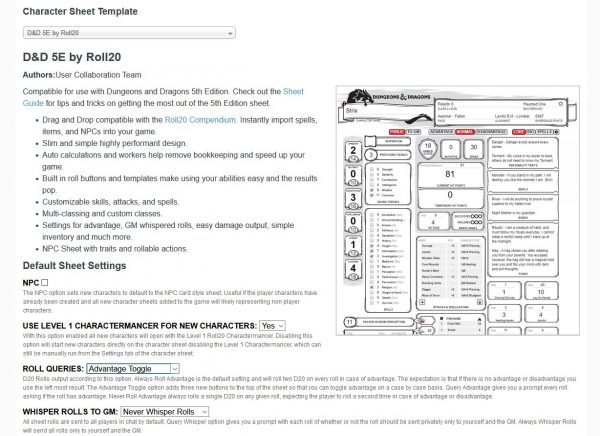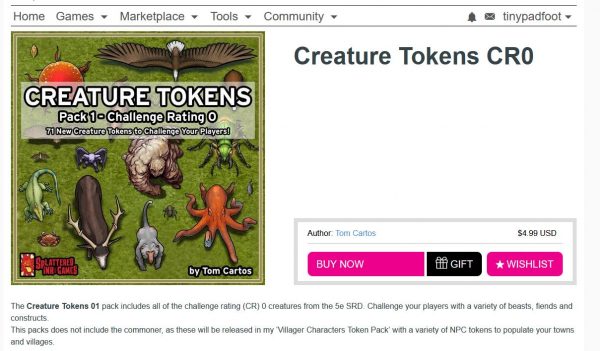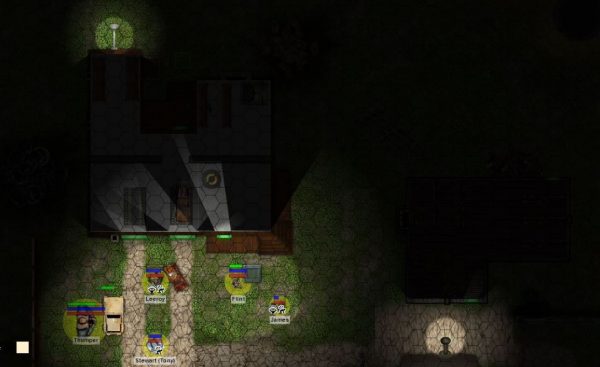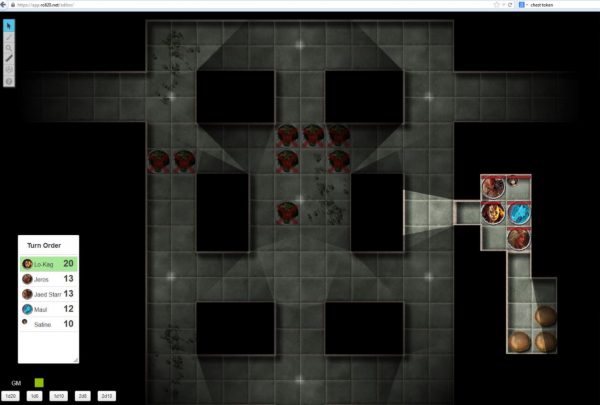What Is Roll20?
Roll20 is a browser-based platform that lets you play board games online. It’s one of the best sites to play not just D&D but also other board game adaptations on your PC. The platform provides tools like the virtual board, character tokens, dice, and all types of systems that allow you to simulate your in-person games online. It also has apps compatible with iPad and Android tablets but it is best played on a computer. The site has beautiful aesthetics, featuring the pink d20 die logo. You can watch the 3D dice roll on the board with the weight of real dice as if you are rolling them physically. The caveat is it is not too easy to use especially for a game as complex as Dungeons and Dragons. There are a lot of settings to adjust and customizations to learn before you can start and launch your game. This crash course will help you learn the ropes in the easiest way possible. If you follow the steps in this Roll20 tutorial, you will be playing D&D with your friends in the comfort of your home in no time. Go to site
Dungeons and Dragons (D&D) Quick Review
If you are new to Dungeons and Dragons or if you haven’t played it in a long time, it’s good to learn the game’s basic mechanics. D&D is a high-fantasy role-playing game (RPG) that centers around storytelling. In fact, several authors have written novels based on D&D. It is set in fantasy worlds where you and your friends venture into quests. Each player creates their own character that center around a certain set of stats. Stats include your health or hit points (HP), proficiency points, special abilities, magic spells, and bonus actions. A Paladin, for example, is immune to diseases. Bards can give “bardic inspiration” to give their fellow adventurers some advantages on their attack rolls and saving throws. There are so many ways to build your D&D character. You can be magical or non-magical; you can choose to be a warrior-type character that has high HP; you can choose your race, class, and customize all these to suit your liking. This crash course will also give you an idea about how to use Roll20’s character sheet tool to make the process easier. Each campaign is moderated by a Dungeon Master (DM). They are the one who controls the flow of the storytelling and also the enemies within the game. They set the rules—including house rules—and usually design the campaign itself. You can head over to the last part of this guide for more about combat rules.
How to Use Roll20 for Your D&D Campaigns
Traditionally, each player uses a pen and paper to keep track of their stats, items, and write down important information that will help them win their quests. All these are made easier using the Roll20 platform. You may still choose to use the classic pen-and-paper approach even when playing online. It is also up to you if you want to roll your own dice at home or roll them on the virtual board for everyone to see. To use Roll20, you will need to create an account, invite your friends, and set the virtual board. The great thing is if you don’t have a party to play with, you can also look for a group on the site. When should you use Roll20 in your campaign? Roll20 is mostly intended for battles. Since D&D is about storytelling, you do not have to use it every time. There may be times, especially in the beginning, when you as a group are just telling stories that let everyone know about each character’s background and have some downtime sessions. These sessions outside of combat are important because no good story ever revolves around combat alone.
Creating an Account
To create your account, go to the official Roll20 website on any browser, click on Create Account on the top right and choose a username and password. You will also have to enter your email to verify your account. Once you are registered, you will see the options to create a game or join a game. It’s a good idea to do this while you are learning how to use Roll20 so you can follow the guide and try it in real-time. Do you have to pay to use Roll20? No, but you will have a lot of advantages if you choose to subscribe or buy some game add-ons like DM bundles. If you plan to play D&D online regularly with your friends, it will save you a lot of trouble if you pay for some features.
Starting a Game From Scratch
Click on the pink icon that says Create New Game on the home page. You will then have to enter a name for your game or campaign. Below that, you will also see an option to create a character sheet. This is a template that lets you fill out a set of fields to describe each character and their attributes, or you can manually do it from the site as well. The template will take you to a page where you can choose the game you are playing. D&D 5e is the newest version of the game. Enter a description to let your friends know what the campaign is about. You can now select your game add-ons to enhance your campaign. But first, adjust your settings.
Game Settings
These instructions are especially directed to the DMs. From the settings tab on the right dropdown on the window, you will be able to enter the menu where you can customize each aspect of your campaign.
Other Settings
Token Settings
This is still under game settings but it’s important to discuss this separately because it can get confusing. The most important thing here is the Bar Location and Bar Style. Go to site
Dungeon Master’s Bundles
As mentioned, you will save a lot of time and make your game more fun if you purchase some add-ons although it is not necessary. The Dungeon Master’s Bundles are extremely useful and will make your job easier as a DM, specifically the Starter Bundle. This includes the Monster Manual and the Players’ Handbook. These are the compendiums, and as you’ve learned above, you can share these with the players so everyone knows what’s going on and can refer to them if they get confused with the rules. You can access these bundles and other game add-ons by clicking on the Marketplace from the top menu. Another of the most useful bundles to purchase is the Dungeon Master’s Guide. It will make learning how to use Roll20 for your D&D campaigns a lot easier. Other bundles you can purchase include Modules which already has an adventure set up for you and your friends. You will learn more about these modules below.
Inviting Players
From the right, click on the purple Invite Players icon. You can either enter their email addresses and they can click the link from there. Or you can share the link directly. When they accept your invitation to join, you can reload the page and see everyone who joined on the right side. Your friends must also sign up for a Roll20 account before they can join.
Using the Character Sheet
Under the game settings discussed above, you can customize what character sheet you and your friends will use. It’s important that all players learn how to use Roll 20’s character sheet so that you don’t waste time looking up info each time somebody loses track. Remember in the earlier sections, D&D 5e is the newest version of the game so make sure to choose that when selecting your character sheet under Settings. The character sheet shows the player’s class and level. It shows their background, alignment, and experience points your character has. You will see the character’s armor class, initiative, and other ability and proficiency points. Other things you will see are the player’s name, types of attacks, and special spellcasting abilities. Under each attack, you will see the additional attack points they can add after rolling and the type of damage that it does to the opponent. The initiative will only show up after the players roll for it. For those who are not familiar with the term, initiative is the first roll players make to determine who gets to act first during combat. You use a d20 die to roll for initiative. You will also see the Death Saves. If a player dies within the game, they need to make death saving throws to determine whether they will be permanently dead or if they can be revived.
How to Promote Someone to DM
When learning how to use Roll20, it’s important to learn the platform’s terms that may be slightly different from the usual D&D terms. Roll20 uses the term GM which stands for Game Master instead of DM. But they mean the same thing. By default, the person who created the game on the platform is automatically a DM. If you want someone else to have the same access to a DM’s tools, you can promote them to GM. To do this, select the person from the right side then click on Promote to GM. The player will receive a notification that they’ve been promoted. This player panel is also where you can choose actions such as banning someone or kicking them out of the game. Of course, this is only necessary if a dispute occurs or if someone is being disrespectful.
Roll20 Tokens and Markers
In Roll20, tokens are what represent players’ characters on the virtual board. It marks their positions and the players move them with a mouse. Of course, it would be more fun for everybody if their token looks like their character. You can purchase tokens from the marketplace or you can upload your own just like you can upload your own map. You can find images online that look like your characters and upload them as tokens. Roll20 also offers access to these free resources. You can also use the free access tokens from your library. Some tokens you can use for different characters are knights, dwarfs, human mages, elves, and so many other classes and races. To assign a token to a character, you have to go to your journal page, choose or create a character, and upload the token under Default Token. Markers are optional but they help a lot. You can mark a character’s token when they are running out of HP, for example. You can also use markers to indicate if someone is poisoned so that everyone is aware that this player needs to roll with a disadvantage on their turn.
Choosing a Module
Modules provide pre-set integrations that you can use so you don’t have to worry about the settings in your game. They are like a template for campaigns, usually intended for bigger adventures. They also contain battle maps. To use a Roll20 module, you would have to select one when you are creating a game. You cannot add a module once you’re done creating. To do this, select Create Game with Module before you start. Once you select the module that you want, it will automatically provide the associated Roll20 character sheets as well.
Creating and Launching Your Game
When you’re happy with your game settings, tokens, maps, etc. you can launch your game. It’s better to complete your setup before inviting players. On the home page, you will see all the games you have created and below each new game, you will see a pink link that says Launch Game. Your D&D campaign will now be available to the players you’ve invited.
How to Use Roll20’s Lighting System
For those who do not have a Roll20 subscription, there is only one lighting option available. It’s called the Fog of War. Enabling this allows you to blur some areas on the board if you don’t want players to see them immediately. Dynamic Lighting, which is available to Roll20 Premium members, does not just blur out entire areas. You can use shadows to block players’ line of vision on the board. Why is this useful? If your combat takes place in a museum, for example, you might want to hide rooms until they enter them. This way, you can surprise them with the enemies waiting for them inside of those rooms.
How Is D&D Played During Combat?
Before we discuss Roll20’s dice rolling feature, it’s good to review some game mechanics. When combat starts, players roll initiatives each with a d20 die (1d20). Whoever gets the highest roll moves first, the next highest second, and so on. Enemies, controlled by the DM, are included in this initiative roll. If they get the highest roll, then they go first. As in any other combat, players need to defeat their enemies using attacks and spells/enchantments. Before you can hit an opponent, you must beat their armor class (AC). If a creature or monster has a 16 armor class, you need to roll a 16 or higher on 1d20. You may add your ability modifiers to this. You may have a plus four (+4) on strength or dexterity, for example, and you can add it to your roll. If you hit, you can roll your damage. How much damage you deal depends on the type of attack or spell. This is where Roll20’s character sheet comes in handy. You usually roll one eight-sided die (1d8) for an attack then you can add your bonuses. For example, you may roll an additional 2d8 for a first-level Divine Smite spell. Damages are deducted from a character’s HP.
Nat 20 and Nat 1
When you roll a 20 on 1d20, you automatically succeed whatever the roll is for. This is called a natural 20 (Nat 20) that warrants an automatic critical hit (crit) on whatever action you were performing. If you roll a one, however, you automatically fail. As you may have guessed, it’s called a natural 1 (Nat 1). This changes when you are rolling with advantage or rolling with disadvantage, as discussed below.
Using Roll20’s 3D Dice
Roll20 has a virtual 3D dice rolling feature. There are two ways to roll dice. One is you can go to the dice tool on the screen—this is the d20 icon. Choose which type of dice you are rolling, whether they’re d4, d8, d12, etc., and how many dice you need. The dice will be populated/animated on the board. Another way is to type your rolls on the chatbox. To roll a d20, type “/rolld20.” If you want multiple dice, six d8 for example, type “/roll6d8.” As for DMs, if you want to hide your rolls from players, you can type “/gmroll d20.”
Rolling for Initiative
How do you use Roll20 for initiatives? Rolling initiatives is one of the most frustrating things you can encounter on any online D&D platform. If you have six players, you have to manually type the initiative that each player rolled. Thankfully, Roll20 has a feature that does this automatically. Players only need to input their initiatives on their character sheets and the system will arrange their turns on the screen accordingly. This saves you a lot of time. Make sure to click the settings icon then choose Descending so that they are arranged from highest to lowest.
Rolling with Advantage/Disadvantage
Sometimes, you may have to roll with advantage/disadvantage. If you are poisoned, for example, you have to roll with disadvantage. This means that you need to roll two dice on your attacks or saving throws and you take whichever is the lower roll. The opposite goes for rolling with advantage. To do this on Roll20, you use the same dice-rolling tool or the commands discussed above. Type “/roll2d20” to roll two d20 dice on the board.
Player Interactions: Whispers and Messages
The platform also has a chat feature so you and your friends can interact if you don’t want to do it over video/audio. To send a message to all players, just type it on the chatbox and hit Enter. A whisper, on the other hand, is a private message to a selected player. To send a whisper, type “/w”, the name of the player you want to send it to, and your message. Example: “/w Murph Did you deal damage to yourself again?”
Final Word
Roll20 is surely one of the best sites to play D&D online. It has a great interface both visually and mechanically. The platform offers so many useful tools and features to make your D&D campaigns smooth and easy to moderate. It may be challenging to learn how to use Roll20 at first but if you follow the tips on this Roll20 crash course, you and your friends will be engaging in the most exciting Dungeons and Dragons combat online in no time!
